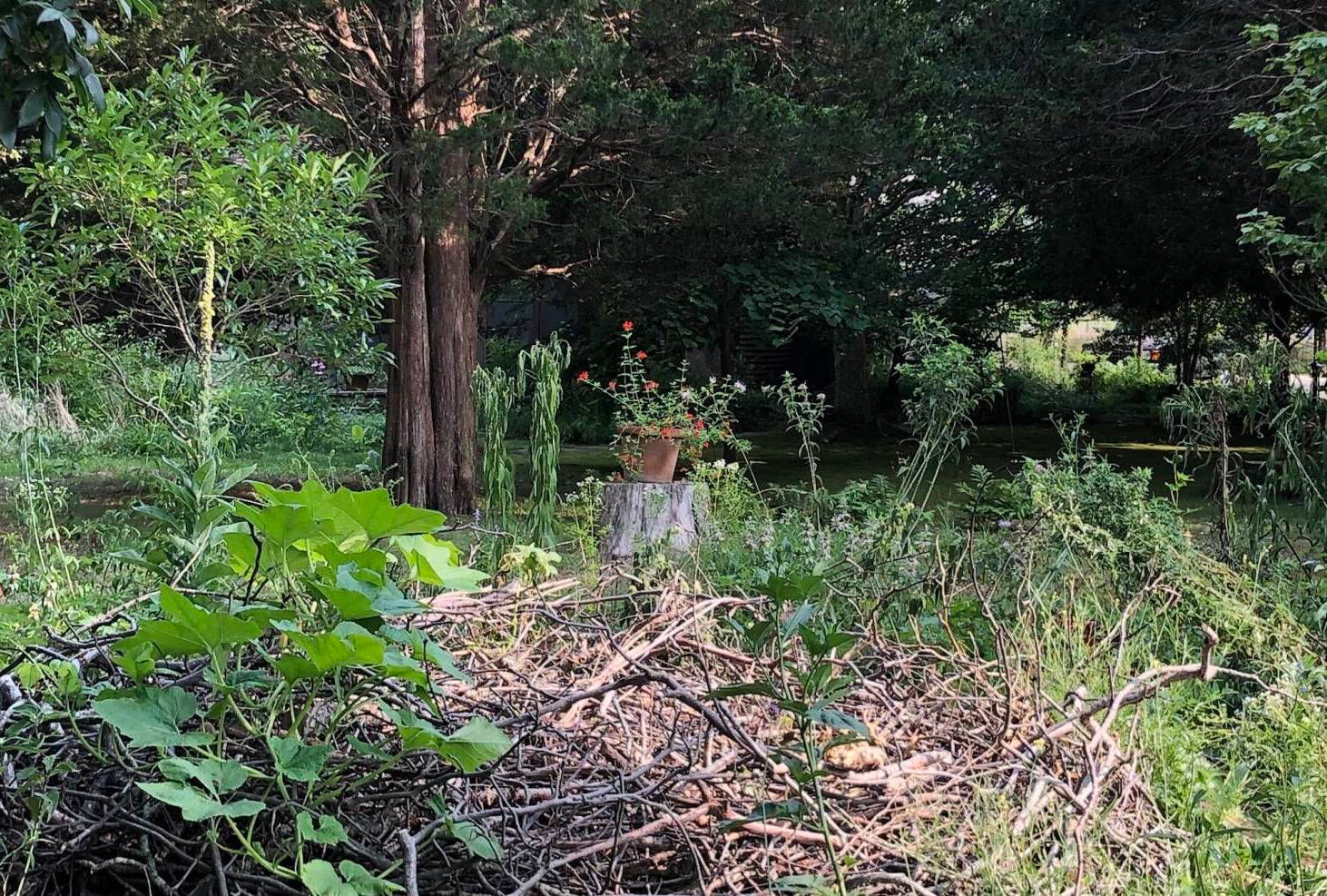
This is part of a series with Perfect Earth Project, a nonprofit dedicated to toxic-free, nature-based gardening, on how you can be more sustainable in your landscapes at home.
With all the recent storms and severe weather happening across the country, many of us are besieged with debris from trees and shrubs.
In fact, keeping garden debris, or biomass (organic matter like branches, stems, and leaves), on your property is one of the principles of nature-based gardening we introduced in last month’s column with Perfect Earth Project.
There are artful ways to display biomass in your garden. On the other hand, if you have a meadow or loosely planted beds, like von Gal has in her garden, you can be freer in your construction.
Von gal is inspired by natural materials sculptors like Andy Goldsworthy and Maren Hassinger (see her inspiring exhibit at LongHouse Reserve, made from branches gathered on the property) who create art from nature.
some examples of how Edwina transforms yard waste into artful critter shelter.
Von Gal doesn’t throw away anything from her garden.
Stack logs from fallen or diseased trees you removed to create walls or screens in your garden. They also provide habitat for native bees, chipmunks, and snakes.
Instead of discarding the branches of non-native California privet (Ligustrum ovalifolium) she removed, von Gal wove them into the trunks of native Eastern red cedar trees (Juniperus virginiana).
This beautiful nest of pinecones, needles, and branches will breakdown over time, feeding the soil.